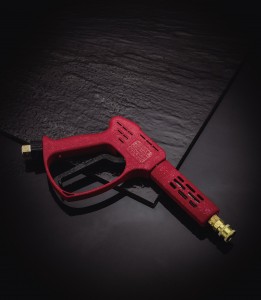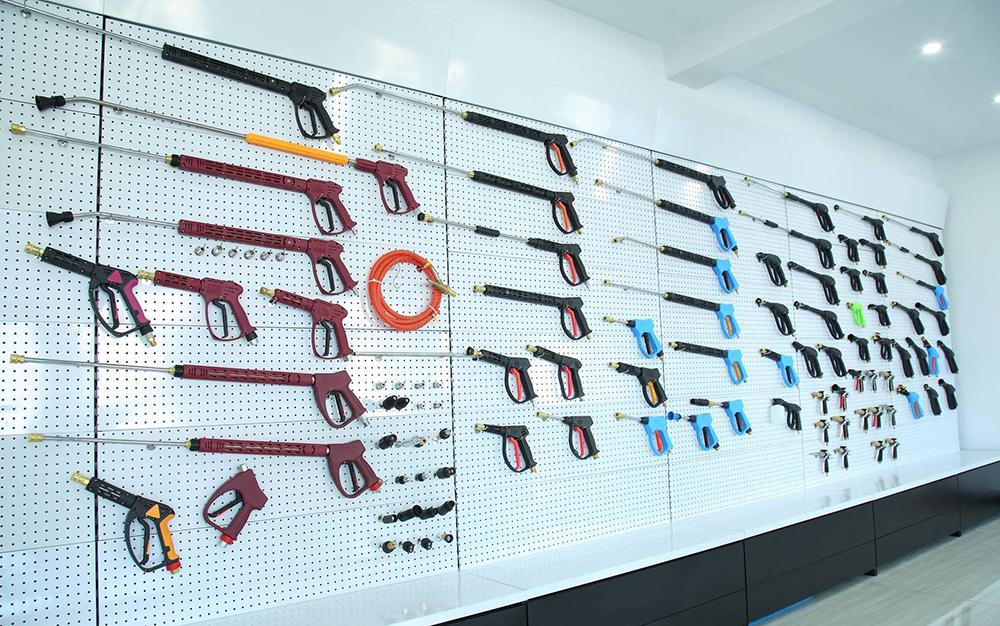 High-pressure washer guns are essential tools for efficient cleaning in residential, commercial, and industrial settings. From washing cars to maintaining garden equipment or tackling industrial grime, these devices leverage pressurized water to remove dirt, grease, and debris quickly. This article explores the mechanics, accessories, safety practices, and future innovations of high-pressure washer guns, providing a comprehensive guide for users seeking reliable, professional-grade solutions.
High-pressure washer guns are essential tools for efficient cleaning in residential, commercial, and industrial settings. From washing cars to maintaining garden equipment or tackling industrial grime, these devices leverage pressurized water to remove dirt, grease, and debris quickly. This article explores the mechanics, accessories, safety practices, and future innovations of high-pressure washer guns, providing a comprehensive guide for users seeking reliable, professional-grade solutions.
Key Takeaways
-
High-pressure washer guns use pressurized water (measured in PSI and GPM) to blast away dirt. Their efficiency depends on pressure settings, nozzle types, and accessories like foam cannons.
-
Nozzle selection (e.g., rotary, fan, or turbo tips) directly impacts cleaning performance for tasks like car washing or concrete cleaning.
-
Proper maintenance (e.g., winterizing, filter checks) extends the lifespan of the washer and its components.
-
Emerging trends include smart pressure adjustment, eco-friendly designs, and battery-powered portability.
What is a High-Pressure Washer Gun?
Definition and Working Principle
A high-pressure washer gun is a handheld device connected to a pressure washer unit. It amplifies water pressure using an electric or gas-powered motor, forcing water through a narrow nozzle at velocities up to 2,500 PSI (pounds per square inch). This creates a powerful jet capable of dislodging stubborn contaminants.
How Does Pressurization Enable Efficient Cleaning?
Pressure washers rely on two metrics: PSI (pressure) and GPM (flow rate). Higher PSI increases cleaning force, while higher GPM covers larger areas faster. For example:
-
1,500–2,000 PSI: Ideal for cars, patio furniture, and light-duty tasks.
-
3,000+ PSI: Used for industrial cleaning, concrete surfaces, or paint stripping.
Advanced models incorporate adjustable pressure settings to prevent surface damage. For instance, reducing PSI when cleaning wooden decks avoids splintering.
Choosing the Right Accessories
Foam Cannons and Nozzles
-
Foam Cannon: Attaches to the gun to mix water with detergent, creating a thick foam that clings to surfaces (e.g., pre-soaking cars before rinsing).
-
Nozzle Types:
-
0° (Red Tip): Concentrated jet for heavy-duty stains (use cautiously to avoid surface damage).
-
15°–25° (Yellow/Green Tips): Fan spray for general cleaning (cars, driveways).
-
40° (White Tip): Wide, gentle spray for delicate surfaces.
-
Rotary/Turbo Nozzle: Rotating jet for deep cleaning grout or grease.
-
Quick-Connect Fittings and Extension Wands
-
Quick-Connect Systems: Allow rapid nozzle changes without tools (e.g., switching from a foam cannon to a turbo tip).
-
Extension Wands: Ideal for reaching high areas (e.g., second-story windows) without ladders.
Nozzle Impact on Cleaning Efficiency
The nozzle’s spray angle and pressure determine its effectiveness:
| Nozzle Type | Spray Angle | Best For |
|---|---|---|
| 0° (Red) | 0° | Paint stripping, industrial rust |
| 15° (Yellow) | 15° | Concrete, brick |
| 25° (Green) | 25° | Cars, patio furniture |
| 40° (White) | 40° | Windows, wooden decks |
| Rotary Turbo | Rotating 0°–25° | Engines, heavy machinery |
Pro Tip: Pair a foam cannon with a 25° nozzle for a “contactless” car wash—foam loosens dirt, and the fan spray rinses it without scrubbing.
Safety Guidelines
-
Wear Protective Gear: Safety goggles and gloves to shield against debris.
-
Avoid High Pressure on Skin: Even 1,200 PSI can cause serious injury.
-
Check Surface Compatibility: High-pressure jets can etch concrete or strip paint unintentionally.
-
Use GFCI Outlets: For electric models to prevent shocks.
Maintenance and Troubleshooting
Routine Care
-
Flush the System: After each use, run clean water to remove detergent residue.
-
Inspect Hoses: Cracks or leaks reduce pressure.
-
Winterize: Drain water and store indoors to prevent freezing damage.
Common Issues
-
Low Pressure: Clogged nozzle, worn pump seals, or kinked hose.
-
Leaks: Tighten fittings or replace O-rings (FFKM O-rings recommended for chemical resistance).
-
Motor Failure: Overheating due to prolonged use; allow cool-down intervals.
Future Innovations (2025 and Beyond)
-
Smart Pressure Control: Bluetooth-enabled guns that adjust PSI via smartphone apps.
-
Eco-Friendly Designs: Water-recycling systems and solar-powered units.
-
Lightweight Batteries: Cordless models with 60+ minutes of runtime (e.g., DeWalt 20V MAX).
-
AI-Assisted Cleaning: Sensors detect surface type and auto-adjust pressure.
FAQ
Q: Which nozzle is best for washing a car?
A: A 25° or 40° nozzle paired with a foam cannon ensures gentle yet thorough cleaning.
Q: How often should I replace O-rings?
A: Inspect every 6 months; replace if cracked or leaking. FFKM O-rings last longer in harsh conditions.
Q: Can I use hot water in a pressure washer?
A: Only if the model is rated for hot water (typically industrial units). Most residential units use cold water.
Conclusion
High-pressure washer guns combine power and precision, making them indispensable for diverse cleaning tasks. By selecting the right accessories, adhering to safety protocols, and staying updated on innovations, users can maximize efficiency and equipment longevity. As technology advances, expect smarter, greener, and more user-friendly designs to dominate the market.
For premium accessories like FFKM O-rings or chemical-resistant nozzles, explore our range of high-pressure washer parts.
Post time: Mar-17-2025

